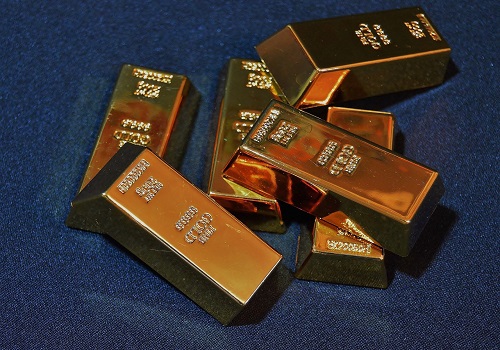Central Banks Boost Gold Reserves in August: Sustained Trend of Healthy Demand Emerges by Amit Gupta, Kedia Advisory

August witnessed central banks increasing their gold reserves for the third consecutive month, with a substantial 38% rise in acquisitions compared to July. Notably, China and Poland led the way, with the People’s Bank of China's consistent purchases and the National Bank of Poland nearing its annual buying target. The overall outlook suggests a robust, ongoing trend of central bank demand for gold, setting the stage for a strong annual total in 2023. However, there remains ambiguity surrounding reported sales, exemplified by the Central Bank of Bolivia's "monetization" of gold reserves, which requires further clarification.
Highlights
Continued Increase in Reserves: Central banks collectively increased their gold reserves for the third consecutive month. In August, they added 77 tons to global official reserves, marking a significant 38% increase from July's acquisitions.
Long-Term Trend of Healthy Central Bank Demand: The recent uptick in gold buying indicates a shift from the net selling observed in April and May, particularly driven by Turkey's non-strategic selling. This suggests a sustained, long-term trend of healthy central bank demand for gold.
Major Buyers: Certain central banks were significant buyers. The People’s Bank of China led with an addition of 29 tons in August, totaling 155 tons year-to-date and 217 tons since November. The National Bank of Poland added 18 tons, nearing its 100-ton buying target for the year.
Selective Buying: While the buying remains significant, it is limited to a small number of banks, including Central Bank of Turkey (15t), Central Bank of Uzbekistan (9t), Reserve Bank of India (2t), Czech National Bank (2t), Singapore (2t), and National Bank of the Kyrgyz Republic (1t).
Russia's Gold Reserves: The Central Bank of Russia reported a 3-ton increase in August, restoring its gold reserves to the level they began the year, at 2,333 tons.
Ambiguity Regarding Sales: While reported sales were minimal, there were claims that the Central Bank of Bolivia "monetized" 17 tons of its gold reserves between May and August. However, the exact meaning of "monetize" is ambiguous, which could imply various actions, such as sales or swap agreements.
Overall Healthy Central Bank Buying: Despite earlier net sales, the pace of buying in 2023 indicates a strong likelihood for another robust annual total. The full overview of central bank demand for Q3 and year-to-date will be included in the next Gold Demand Trends report, expected to be published at the end of October.
Conclusion
In conclusion, the central bank demand for gold continued its upward trajectory in August, signaling a remarkable shift from earlier net sales observed in April and May. The resilience of this trend is underscored by consistent and substantial purchases from key players like China and Poland, contributing to a positive outlook for the annual totals. Nevertheless, questions persist regarding reported sales, exemplified by the Central Bank of Bolivia's recent "monetization" of its gold reserves, which requires clarification to ascertain its impact on global gold holdings. As we eagerly anticipate the next Gold Demand Trends report in October, it is evident that central banks remain significant players in the gold market, further reinforcing the metal's enduring role as a store of value and strategic reserve asset.
Above views are of the author and not of the website kindly read disclaimer




















